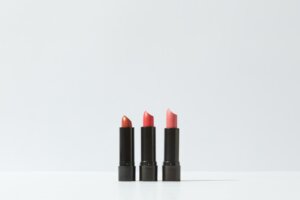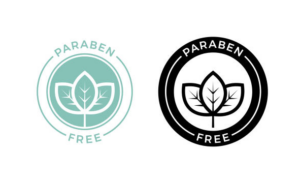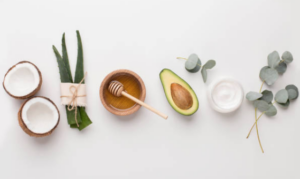Decoding the Language and Making Informed Choices

In the realm of clean beauty, navigating labels can be a daunting task. As consumers increasingly prioritize safer and more ethical beauty products, the clean beauty movement has gained significant momentum. However, with this surge in demand comes a flood of products labeled as “clean,” “natural,” or “organic,” making it challenging for consumers to differentiate between genuine clean beauty products and those that simply capitalize on the trend. This blog aims to provide guidance on navigating labels in the clean beauty industry, empowering readers to make informed choices and understand the significance of various terms and certifications.
The clean beauty landscape is characterized by products formulated with safer ingredients, free from potentially harmful substances such as parabens, sulfates, and synthetic fragrances. However, the lack of standardized regulations and clear definitions in the industry can create confusion and uncertainty. Without a discerning eye, consumers may fall victim to deceptive marketing tactics and unknowingly purchase products that do not align with their clean beauty expectations.

Decoding product labels is essential to ensure that the products we use are truly clean and in line with our values. By understanding the language used in the clean beauty industry, we can navigate the complex world of labels and claims. It is crucial to evaluate not only the presence of certain ingredients but also the absence of harmful substances and the overall transparency of brands. Moreover, the significance of certifications and seals cannot be overlooked. Third-party certifications provide additional reassurance and validation of a brand’s commitment to clean beauty. However, it is important to understand the requirements and standards associated with these certifications to ensure their credibility and reliability.
By empowering ourselves with knowledge and developing a critical eye, we can make conscious decisions about the beauty products we choose to support. Navigating labels is not just about reading words on a package; it is about understanding the underlying values, transparency, and ethical practices of the brands we trust. Through informed choices and support for brands that prioritize transparency and ethical initiatives, we can contribute to a cleaner, safer, and more sustainable beauty industry.
Clean beauty encompasses products that are formulated with safer ingredients, free from potentially harmful substances such as parabens, sulfates, and synthetic fragrances. However, the lack of standardized regulations and clear definitions in the industry can make it challenging to distinguish between genuinely clean products and those that merely capitalize on the trend. By understanding the clean beauty landscape, consumers can develop a discerning eye when evaluating product labels.
“Natural” vs. “Organic”: The terms “natural” and “organic” are often used interchangeably, but they have distinct differences. While “natural” implies that ingredients are derived from natural sources, it does not guarantee that the product is free from synthetic additives. On the other hand, “organic” indicates that the ingredients have been grown without the use of synthetic pesticides or genetically modified organisms (GMOs). Understanding these distinctions helps consumers identify products that align with their preferences for natural or organic formulations.
“Non-Toxic” or “Chemical-Free”: Claims of “non-toxic” or “chemical-free” suggest the absence of harmful substances. However, it’s important to note that everything is made up of chemicals, and not all chemicals are harmful. Instead of assuming that a product labeled as “non-toxic” is entirely free from chemicals, it is more valuable to assess whether it avoids known toxic ingredients commonly found in conventional beauty products.
“Cruelty-Free” and “Vegan”: The terms “cruelty-free” and “vegan” are often used in relation to animal welfare. “Cruelty-free” implies that the product or its ingredients have not been tested on animals. However, it’s essential to distinguish between products that are truly cruelty-free and those that claim to be but may rely on ingredients tested on animals by third-party suppliers. Similarly, “vegan” refers to products that do not contain any animal-derived ingredients. Yet, some vegan products may still be tested on animals, so it is important to look for both cruelty-free and vegan certifications.
“Sustainable” and “Environmentally Friendly”: Claims of sustainability and environmental friendliness highlight a brand’s commitment to minimizing its impact on the planet. However, the absence of clear regulations around these terms can lead to greenwashing. To assess the credibility of such claims, consumers can look for specific initiatives like responsible sourcing, eco-friendly packaging, or participation in sustainability programs.
“Hypoallergenic” and “Dermatologist-Tested”: Claims of hypoallergenicity and dermatologist testing aim to cater to individuals with sensitive skin. However, these terms are not regulated, and their meaning can vary. It’s important to consider personal skin sensitivities and read ingredient lists to determine if the product contains potential allergens.
By gaining a deeper understanding of these terms and claims, consumers can make more informed choices when selecting clean beauty products. However, it is crucial to go beyond the labels and conduct further research, read ingredient lists, and explore brands’ transparency and ethical practices to ensure alignment with personal values and preferences.
In the clean beauty industry, transparency and ethical practices are crucial factors to consider when evaluating brands. Consumers are increasingly seeking brands that not only provide safe and effective products but also demonstrate a commitment to transparency, sustainability, and social responsibility. Transparency starts with clear and accessible information about a brand’s sourcing, manufacturing processes, and ingredient lists. Ethical brands prioritize honesty and open communication, willingly sharing information with consumers. Look for brands that disclose their sourcing methods, including the origins of ingredients and the ethical practices employed in their supply chains. Brands that are transparent about their manufacturing processes, such as their manufacturing locations and quality control measures, demonstrate a commitment to producing high-quality and safe products.
Furthermore, ethical brands often have a strong commitment to sustainability. They prioritize eco-conscious practices throughout their operations, from ingredient sourcing to packaging. Look for brands that use renewable resources, support fair trade, employ environmentally friendly manufacturing techniques, and use recyclable or biodegradable packaging. Additionally, brands that engage in initiatives to reduce waste, conserve energy, or support environmental causes showcase a genuine commitment to sustainability.

Social responsibility is another important aspect of ethical brand practices. Look for brands that uphold fair labor practices, ensure the well-being of their workers, and support local communities. Ethical brands often engage in philanthropic efforts, such as donating a portion of their proceeds to charitable causes or actively supporting initiatives that promote social justice and equality. To assess a brand’s transparency and ethical practices, consumers can conduct thorough research. Visit the brand’s website and look for information about their values, commitments, and certifications. Take note of third-party certifications and affiliations with reputable organizations that validate a brand’s ethical claims. Additionally, explore independent sources and consumer reviews to gather insights into a brand’s reputation and track record.
Navigating labels in the clean beauty industry is a journey towards informed decision-making and responsible consumerism. By decoding key terms, understanding certifications, and assessing transparency and ethical brand practices, individuals can make conscious choices aligned with their values and preferences. The clean beauty movement has provided an opportunity for consumers to prioritize their health, the environment, and ethical considerations when selecting beauty products. However, it is essential to remain vigilant and not be swayed by misleading claims or greenwashing tactics. Transparency plays a vital role in the clean beauty industry. Brands that openly share information about their ingredients, sourcing, manufacturing processes, and environmental initiatives exhibit a commitment to integrity and consumer trust. By supporting transparent brands, consumers contribute to a culture of accountability and encourage others to prioritize ethical practices.
Furthermore, ethical brand practices encompass sustainability, fair labor practices, and social responsibility. Supporting brands that go beyond buzzwords and genuinely integrate these practices into their operations helps foster a more sustainable and equitable beauty industry. As consumers, we have the power to demand change by asking questions, conducting research, and sharing our knowledge with others. By advocating for greater transparency, supporting ethical brands, and encouraging regulatory standards, we can collectively shape the clean beauty industry into one that prioritizes safety, sustainability, and integrity. In the pursuit of clean beauty, let us remain informed, critical, and committed to making choices that align with our values. By working together, we can drive positive change, promote responsible consumerism, and contribute to a future where clean beauty is not just a trend, but a meaningful and enduring movement.

